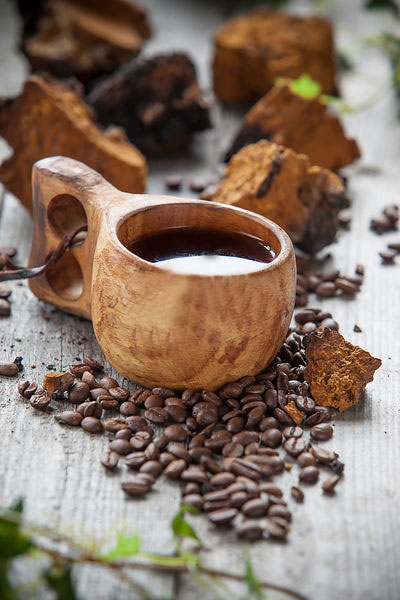Guksi: a handmade wooden bowl featuring Scandinavian coffee culture

An elegant artifact from the northern forests.
Every coffee culture has its own, different "tools". So Moka Pot is almost synonymous with Italy, while Ethiopian coffee is definitely brewed in Jebena, the traditional long-necked bronze pot. No one can imagine Greek coffee without the requisite coffee ibrik, while fanatics have a definite view of what the right cups of espresso should be like. One of the most special coffee utensils, located in the northern parts of Scandinavia and is none other than Guksi!
The coffee culture in Scandinavia
Although not widely known, the Scandinavians are the first in the world to consume coffee per capita! Finns come first (12kg per person), followed by Norwegians and Swedes. Coffee is very important to the daily lives of all Scandinavians, both gastronomically and socially - fikka, coffee break, our well-known coffee break, is an integral part of working reality in Sweden and the Swedes themselves boast growing fears their productivity, while the proportion of coffee shops per capita is particularly high in all Scandinavian countries.
Scandinavians prefer light filter coffee and consume really generous amounts daily. Special coffee recipes have been developed that are hard to find outside of Scandinavia, such as kafeost, which combines filter coffee with chunks of ... cheese, in a coffee-dessert reminiscent of what they say is tiramisu.
If anything however characterizes (or at least, until recently, characterized) Scandinavian coffee culture, this is none other than Guksi, the traditional wooden cup of the northern parts of Finland and Sweden.
 What is Guksi?
What is Guksi?
Guksi is a wooden, handmade cup found in the northern parts of Sweden and Finland. In the native dialect of the indigenous Sami it is called Gusksi, while the Swedes call it kasa and the Finnish kuksa. The specialty of Guksi lies in its unique way of construction.
Guksi's are made of rosewood, especially birch. Roses are the typical bumps that birches make when they are infected with diseases, insects or parasites, and are often quite large in size. The guksi are made of a single rose and do not consist of smaller pieces. It takes a lot of skill to turn the rough and irregular rosé into a chic, sleek and easy-to-use Guksi, but the indigenous nomadic culture has as much to do with woodcarving, and the guksi have been the crown jewel of one of the oldest woodcarving art one of the most respected members of every community.
Of course, the art of Guksi coffee existed, as these cups were always used for hot drinks, but with the introduction of coffee on the Scandinavian peninsula, they were considered ideal for serving hot, steamed coffee. Scandinavians argue that because of the wood, they enhance the aromas of coffee, but also maintain the high temperature of the beverage very effectively. Still, as soap cleaning damages Guksi's natural wood, most people rinse it off with water and wipe it softly, but so does the coffee watering the pores of the wood, resulting in a distinct smell - or at least, this urban myth supports it.
Is still Guksi used nowadays?
Today, of course, the production of such a handmade piece is sharply limited compared to the old ones, mainly due to the timber industry but also the abandonment of traditional woodcarving techniques. Widespread ceramic and plastic guksi are available, while authentic wood carving cups are extremely expensive and are usually available in souvenir shops, and are also expensive gifts for locals. But even if the Scandinavians now drink their coffee in mugs and cups like the rest of the planet, on festive occasions, coffee is mostly served through a traditional guksi!
Knowing how every people drink their coffee, we also know an aspect of their history. A beautiful wooden bowl hides a culture of northern forests that is slowly disappearing - but still survives, thanks to coffee!










